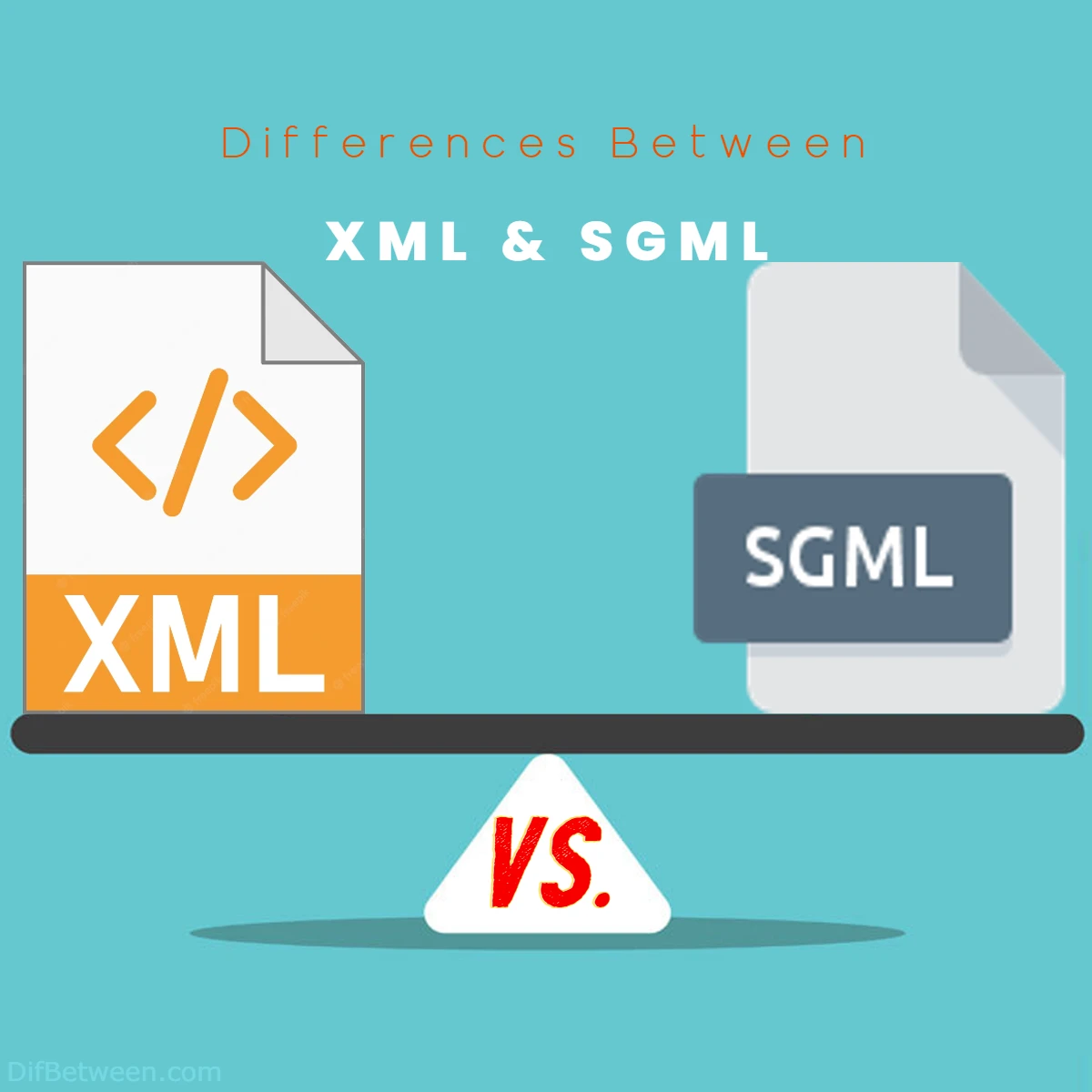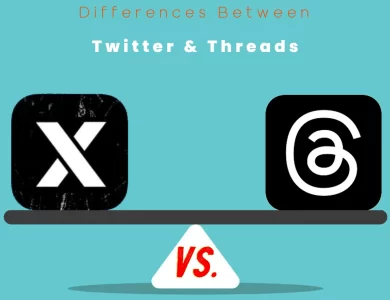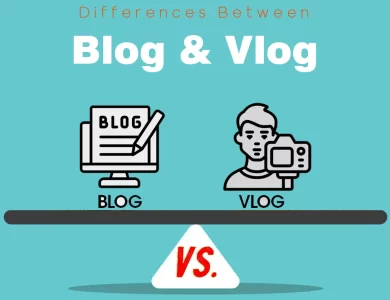
| Aspect | XML | SGML |
|---|---|---|
| Introduction | Born in the late 1990s, focused and streamlined version of structured markup. | Emerged in the 1980s, precursor to XML, with complex customization. |
| Syntax and Tagging | Self-explanatory tags, adaptable syntax for diverse data types. | Customizable tag sets through complex Document Type Definitions. |
| Document Type Definitions (DTDs) | DTDs define document structure and rules using simplified syntax. | DTDs enable intricate document structuring with specialized control. |
| Tag Nesting and Hierarchy | Strict tag nesting enhances readability and predictability. | Relaxed tag nesting provides flexibility but demands vigilance. |
| Error Handling | Strict error handling ensures data integrity, intolerance to errors. | Forgiving error handling maintains interpretability despite errors. |
| Application Focus | Universal data exchange, data storage, configuration files. | Industries demanding precision and customization in documentation. |
| Complexity | Simplified, user-friendly; adaptable across applications. | Highly flexible, powerful; suitable for specialized, complex scenarios. |
| Long-Term Archiving | Suitable for long-term data storage. | Ideal for industries requiring preservation and data integrity. |
| Standardization | Widely adopted standard, supported by various programming languages. | Less common, specialized usage; requires expertise for full utilization |
In this article, we’ll be delving into the intriguing realm of XML (eXtensible Markup Language) and its predecessor, SGML (Standard Generalized Markup Language). Both these languages play crucial roles in data representation and content organization, yet they exhibit distinct characteristics that set them apart. So, let’s embark on this adventure of discovery and unravel the key differences between XML and SGML.
Differences Between XML and SGML
The main differences between XML and SGML lie in their complexity and adaptability. XML, the descendant of SGML, offers a simplified and versatile approach, designed for seamless data interchange across systems. It features self-explanatory tags and a user-friendly syntax, making it accessible for various applications. In contrast, SGML, the precursor, boasts extensive customization capabilities through complex Document Type Definitions (DTDs), catering to industries requiring specialized structuring and precision. The choice between XML and SGML depends on the project’s complexity, with XML favoring universal data exchange and SGML excelling in domains demanding intricate customization.
1. Introduction: A Tale of Structured Markup
XML and SGML, like two branches of the same tree, share a common lineage, both emerging from the roots of structured markup. Structured markup involves tagging content with meaningful labels, enabling computers to comprehend and process data more efficiently. SGML, the forebear, laid the groundwork for this concept, giving rise to the world of structured information. XML, a more focused and streamlined offspring, inherited many of SGML’s traits while introducing new features that catered to the evolving needs of the digital age.
XML: Embracing Simplicity and Focus
XML, born in the late 1990s, can be seen as SGML’s refined and approachable descendant. It retained the core principle of structured markup but shed some of SGML’s complexities. XML’s primary goal was to offer a versatile platform for data exchange across different systems and applications. This versatility stemmed from its simplified syntax and the ability to define custom tags that reflect the specific nature of the data being encoded.
SGML: Pioneering Structure
On the other hand, SGML, emerging in the 1980s, was a visionary in the realm of structured markup. It introduced the revolutionary concept of Document Type Definitions (DTDs), which served as blueprints for structuring documents. These DTDs allowed content creators to define their own elements and rules, creating a highly flexible system for organizing information. This early innovation laid the foundation for more refined approaches in XML.
2. Syntax and Tagging: A Dance of Similarities and Contrasts
At the heart of both XML and SGML lies the concept of tagging. Tags serve as the building blocks that organize content and give it meaning. While XML inherited this core principle from SGML, it brought its own twist to the tale.
XML Tags: Self-Explanatory and Extensible
XML tags are designed to be self-explanatory, making the data they encapsulate easy to understand even for those unfamiliar with the document’s context. Additionally, XML embraces extensibility, allowing developers to define custom tags that suit their specific needs. This adaptability is particularly valuable in dynamic digital environments where diverse data types require specialized tagging.
SGML Tags: Power Through Flexibility
SGML, being the trailblazer, introduced the concept of tag sets. This allowed content creators to craft highly customized elements, giving unparalleled flexibility in document structuring. However, this flexibility came at a cost—SGML’s tag sets required complex Document Type Definitions (DTDs) to ensure proper interpretation, making it a bit unwieldy for certain applications.
3. Document Type Definitions (DTDs): The Architectural Difference
Document Type Definitions (DTDs) are the rulebooks that dictate how a document’s structure should be interpreted. Both XML and SGML employ DTDs, but with some fundamental differences.
XML DTDs: Embracing Simplicity
XML’s DTDs, while drawing inspiration from SGML, are simpler and more user-friendly. They enable developers to define the structure of their documents using a concise syntax. However, XML’s DTDs lack some of the advanced features present in SGML’s DTDs, making XML slightly less powerful but more accessible.
SGML DTDs: Unparalleled Power
SGML’s DTDs, true to its heritage of flexibility, offer a broader range of capabilities. The complexity of SGML DTDs allows for intricate document structures and highly specialized markup. While this power is undoubtedly impressive, it often comes at the cost of increased complexity, making SGML less approachable for casual users.
4. Tag Nesting and Hierarchy: Similar Goals, Different Paths
Both XML and SGML share the goal of representing structured information, and this is achieved through the nesting and hierarchy of tags. However, their approaches to achieving this goal differ in notable ways.
XML Tag Nesting: Well-Ordered Hierarchies
XML enforces strict nesting rules, ensuring that tags are properly nested within one another. This meticulous structure enhances the readability and predictability of XML documents, making them easily interpretable by software applications. However, the rigid nesting rules can occasionally lead to verbosity in XML documents.
SGML Tag Nesting: A Lax Approach
SGML, in its pursuit of flexibility, takes a more relaxed stance on tag nesting. While this freedom grants content creators greater control, it also demands a higher level of diligence to maintain a coherent structure. This approach can lead to documents that are less consistent and potentially harder for software to process reliably.
5. Error Handling: Striving for Perfection or Adapting on the Fly?
Error handling is an integral part of any markup language, ensuring that documents remain interpretable even in the face of mistakes. XML and SGML handle errors in distinct ways, reflecting their underlying design philosophies.
XML Error Handling: Zero Tolerance for Ambiguity
XML takes a strict approach to error handling. Even minor inconsistencies can render an XML document unreadable by parsers. While this approach promotes data integrity and accuracy, it can be less forgiving for content creators who may need to deal with unexpected issues.
SGML Error Handling: Adapt and Overcome
SGML, with its roots in flexibility, employs a more forgiving error handling strategy. SGML parsers are designed to interpret documents to the best of their ability, even in the presence of errors. This adaptability can be advantageous in situations where data may be incomplete or imperfect, allowing for more leniency in handling unexpected situations.
6. Application Focus: Versatility vs. Specialization
Both XML and SGML find application in diverse domains, but their design philosophies lead them to excel in different areas.
XML: The Universal Data Format
XML’s simplicity and user-friendly nature make it an ideal choice for scenarios where data exchange between different systems is paramount. It’s widely used in web services, data storage, configuration files, and more. Its adaptability and broad support across various programming languages contribute to its universal appeal.
SGML: Precision in Specialization
SGML’s flexibility and power lend themselves well to industries where precision and specialization are crucial. Sectors such as aerospace, healthcare, and complex technical documentation benefit from SGML’s ability to accommodate intricate and domain-specific requirements. However, this specialization comes at the cost of broader applicability and ease of use.
XML or SGML: Which One is the Right Choice for You?
Choosing between XML (eXtensible Markup Language) and SGML (Standard Generalized Markup Language) depends on your project’s needs and goals.
Choose XML If…
- Simplicity and Versatility Matter: If you’re looking for a straightforward syntax and easy-to-understand tags, XML is the way to go. It excels in scenarios where data interchange across different systems is crucial.
- Web Development and Data Exchange: XML’s adaptability and broad support across programming languages make it an excellent choice for web development, configuration files, and sharing data across various platforms.
- User-Friendly Approach: If you want a markup language that is accessible to developers of varying expertise, XML’s self-explanatory tags and simplicity make it a practical choice.
Choose SGML If…
- Precision and Specialization Are Essential: For industries demanding precision and customization, such as aerospace or healthcare, SGML’s powerful customization capabilities and complex Document Type Definitions (DTDs) offer the control you need.
- Intricate Document Structures: If your project involves complex and highly specialized document structures beyond XML’s capabilities, SGML’s flexibility can accommodate your requirements.
- Long-Term Archiving and Data Preservation: SGML’s robustness and ability to handle intricate structuring make it suitable for industries that require long-term archiving and preservation of documents.
- Industries with Complex Requirements: SGML’s heritage as the precursor to XML makes it well-suited for industries with specialized and complex documentation needs, such as technical and scientific sectors.
In the end, the choice between XML and SGML hinges on the nature of your project. While XML excels in universal data interchange and accessibility, SGML thrives in domains that demand intricate customization and precision. Evaluate your project’s complexity, requirements, and long-term goals to make the right choice for your specific needs.
FAQs
The main difference lies in their complexity and focus. XML (eXtensible Markup Language) is a simplified and versatile markup language designed for data interchange across systems, while SGML (Standard Generalized Markup Language) is a more complex precursor with extensive customization capabilities, suitable for industries demanding precision and specialized documentation.
XML features self-explanatory tags and a straightforward syntax, making it easily understandable for different users. SGML, on the other hand, employs customizable tag sets that demand more intricate Document Type Definitions (DTDs), offering advanced structuring but at the cost of complexity.
DTDs are rulebooks that define the structure of documents. XML’s DTDs are simpler and more accessible, ensuring data integrity and readability. SGML’s DTDs are more powerful and allow for intricate and specialized document structures, catering to industries with complex requirements.
XML enforces strict tag nesting for readability and predictability. SGML, driven by flexibility, offers more relaxed tag nesting, providing greater control but requiring careful attention to maintain coherence.
SGML is more forgiving in error handling. SGML parsers interpret documents to the best of their ability, even in the presence of errors. XML, however, has a stricter approach where minor inconsistencies can render a document unreadable by parsers.
XML is commonly used in scenarios requiring data interchange across different systems. It finds applications in web services, configuration files, data storage, and more, owing to its adaptability and ease of integration.
SGML excels in specialized industries that demand precision and customization, such as aerospace, healthcare, and complex technical documentation. Its ability to accommodate intricate and domain-specific requirements makes it a valuable choice in these domains.
Both XML and SGML can be used for long-term archiving, but SGML’s robustness and intricate structuring capabilities might be more suitable for industries requiring preservation and data integrity over extended periods.
Consider factors such as the nature of your project, the level of customization required, the complexity of document structures, and the industry’s demands. Choose XML for versatility and universal data interchange, and SGML for specialized industries with stringent structuring requirements.
XML and SGML are both structured markup languages, but they cater to different needs. XML focuses on simplicity, adaptability, and data interchangeability, making it ideal for universal data exchange. SGML emphasizes flexibility, customization, and precision, making it a choice for industries requiring specialized and intricate structuring. The decision depends on the project’s context and requirements.
Read More:
Contents
- Differences Between XML and SGML
- 1. Introduction: A Tale of Structured Markup
- 2. Syntax and Tagging: A Dance of Similarities and Contrasts
- 3. Document Type Definitions (DTDs): The Architectural Difference
- 4. Tag Nesting and Hierarchy: Similar Goals, Different Paths
- 5. Error Handling: Striving for Perfection or Adapting on the Fly?
- 6. Application Focus: Versatility vs. Specialization
- XML or SGML: Which One is the Right Choice for You?
- FAQs






